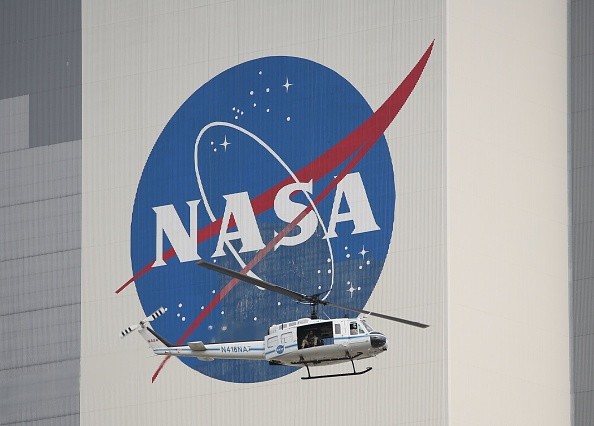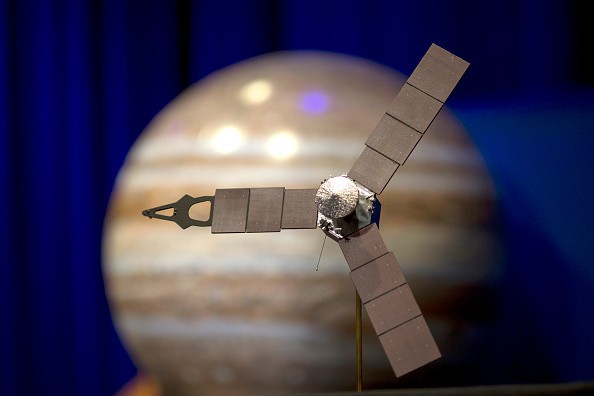NASA will fund new futuristic space technologies. Some of them are like the machines and other innovations you see in sci-fi movies.

The NIAC (NASA Innovative Advanced Concepts) is the program of the international space union.
This project supports the innovations presented by various institutions, universities, and agencies to help NASA's astronauts further explore the universe.
"As in years past, our new group of NIAC fellows showcases the creativity and vision of the space community at large," said Michael LaPointe, the current NIAC Program Executive.
NASA To Fund Futuristic Space Techs
According to Forbes' latest report, the NIAC is willing to provide $5.1 million to 17 researchers across the nine states.

Read also: NASA: Air Travel is the Future, Collaborations Are Open Now; eVTOL, Other Vehicles Coming Soon?
Specifically, these futuristic space technologies include 12 innovations for Phase I study and five new space techs for Phase II study.
Researchers listed in the Phase I study will receive $175,000 each, which they need to use for their nine-month studies.
Meanwhile, the Phase II space technology innovators will have more funds, each receiving $600,000. But, this budget will specifically be used for their two-year studies.
Phase I, Phase II NIAC Funded Space Techs
NASA Gov provided the complete lists for the futuristic space technologies included in Phase I and Phase II funds of NIAC. These include the following:
Phase I
- Darmindra Arumugam, NASA's Jet Propulsion Laboratory in Southern California: Cryospheric Rydberg Radar
- John Mather, NASA Goddard: Hybrid Observatory for Earth-like Exoplanets (HOEE)
- Marcin Pilinski, University of Colorado, Boulder: In-situ Neutral-Optics Velocity Analyzer for Thermospheric Exploration (INOVATE)
- Jonathan Sauder, NASA's Jet Propulsion Laboratory in Southern California: Starburst: A Revolutionary Under-Constrained Adaptable Deployable Structure Architecture
- Bonnie Dunbar, Texas A&M University in College Station: The Spacesuit Digital Thread: 4.0 Manufacture of Custom High Performance Spacesuits for the Exploration of Mars
- Ivan Ermanoski, Arizona State University in Tempe: Breathing Mars Air: Stationary and Portable O2 Generation
- Philip Lubin, University of California, Santa Barbara: Pi - Terminal Defense for Humanity
- Sara Seager, Massachusetts Institute of Technology in Cambridge: Venus Atmosphere and Cloud Particle Sample Return for Astrobiology
- Mahmooda Sultana, NASA Goddard: SCOPE: ScienceCraft for Outer Planet Exploration
- Steven Barrett, Massachusetts Institute of Technology in Cambridge: Silent, Solid-State Propulsion for Advanced Air Mobility Vehicles
- Jason Benkoski, Johns Hopkins University in Baltimore: Combined Heat Shield and Solar Thermal Propulsion System for an Oberth Maneuver
- Elena D'Onghia, University of Wisconsin-Madison: CREW HaT: Cosmic Radiation Extended Warding using the Halbach Torus
Phase II
- Marco Pavone, Stanford University in California: ReachBot: Small Robot for Large Mobile Manipulation Tasks in Martian Cave Environments
- Ethan Schaler, NASA JPL: SWIM: Sensing with Independent Micro-swimmers
- Javid Bayandor, State University of New York at Buffalo: BREEZE: Bioinspired Ray for Extreme Environments and Zonal Exploration
- Zac Manchester, Carnegie Mellon University in Pittsburgh, Pennsylvania: Kilometer-Scale Space Structures from a Single Launch
- E. Joseph Nemanick, The Aerospace Corporation in El Segundo, California: Atomic Planar Power for Lightweight Exploration (APPLE)
In other news, NASA NOAA GOES-T is expected to reach space this coming March. Meanwhile, NASA Hubble Space Telescope captured the so-called Space Triangle.
For more news updates about NASA and its upcoming space activities, always keep your tabs open here at TechTimes.
This article is owned by TechTimes
Written by: Griffin Davis
ⓒ 2025 TECHTIMES.com All rights reserved. Do not reproduce without permission.




